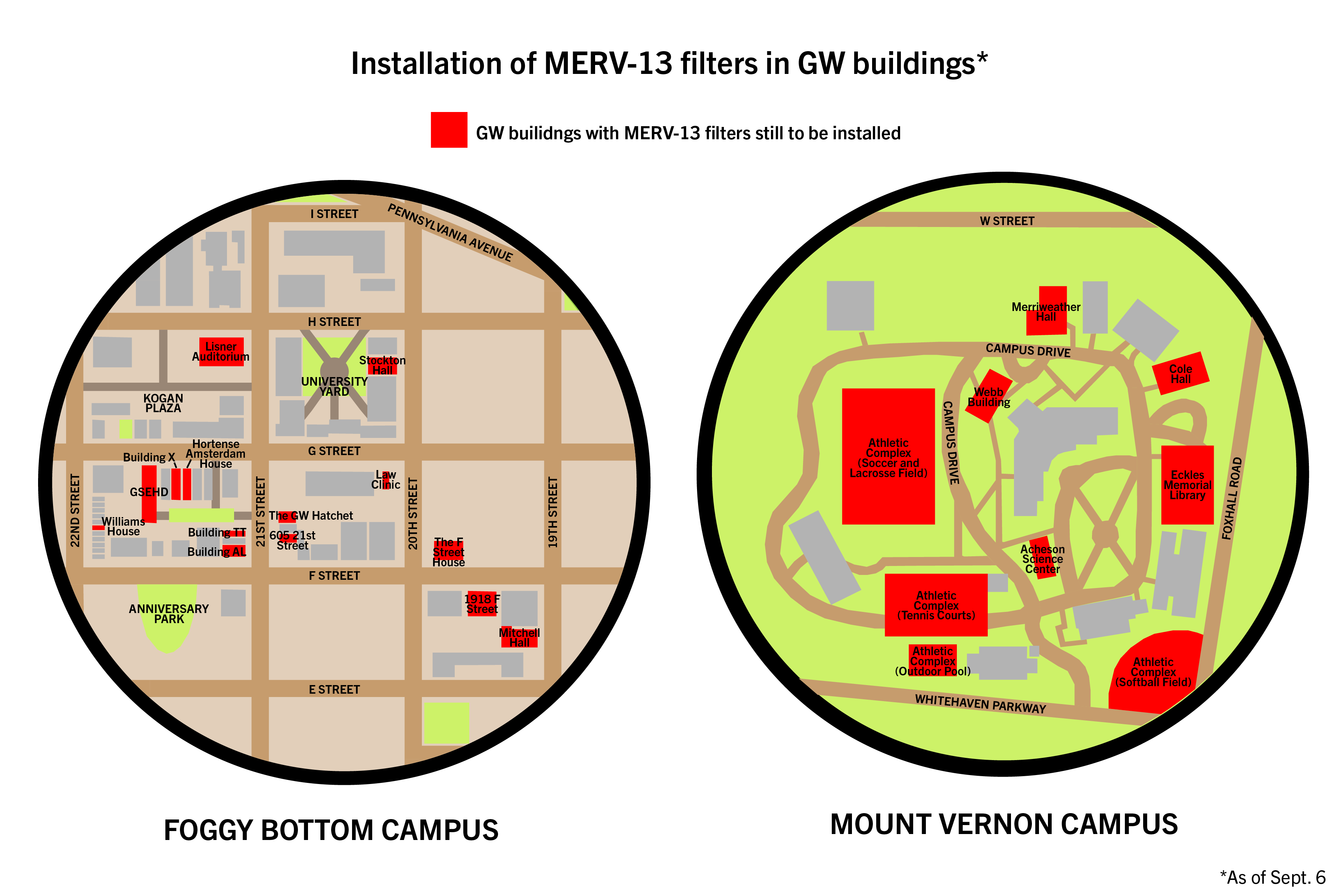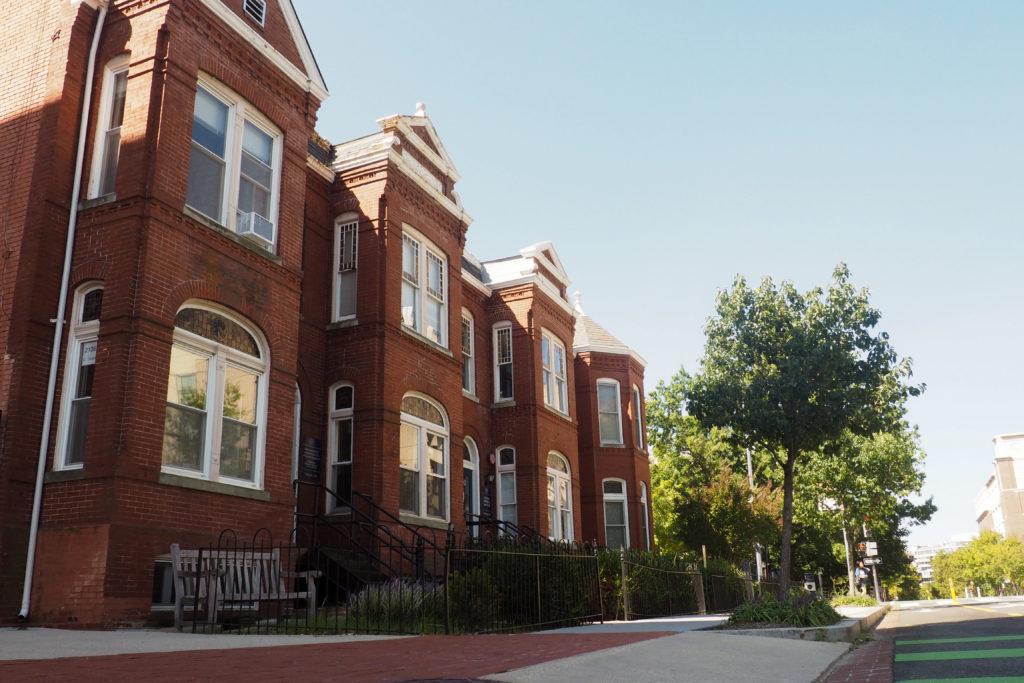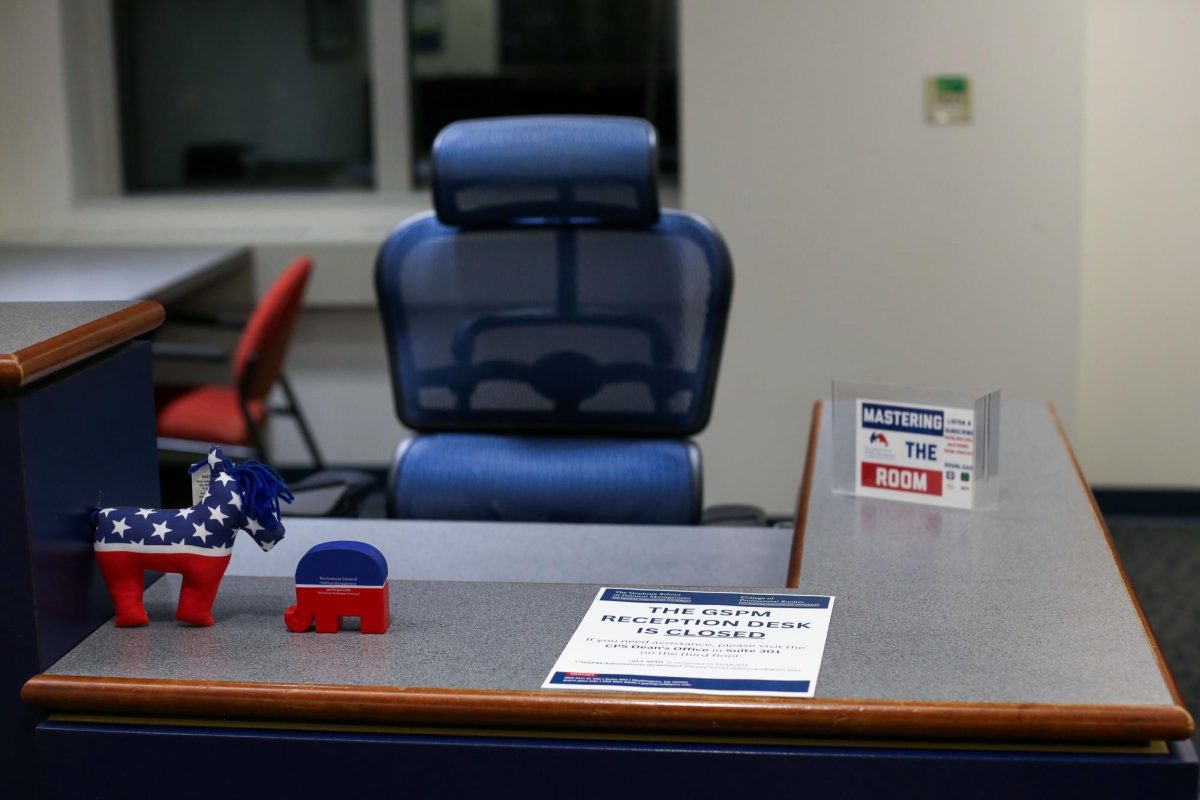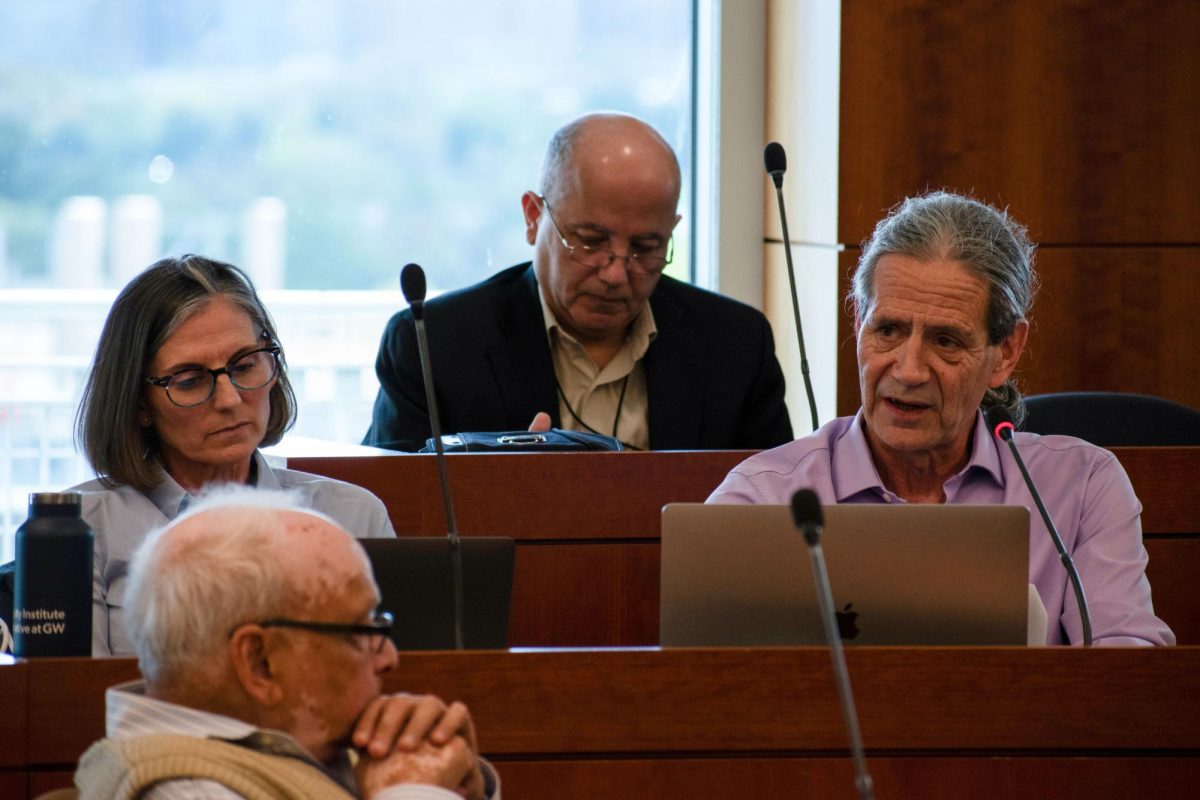A group of faculty senators introduced a resolution last week saying officials spread misinformation about their HVAC upgrade timeline, calling on them to release additional data to increase transparency.
Officials indicated in June that they completed work to retrofit the University’s HVAC systems with reopening guidelines from the Centers for Disease Control and Prevention and the American Society of Heating, Refrigerating and Air-Conditioning Engineers. But Scott Burnotes, the vice president for safety and facilities, issued a new statement late last month, saying officials failed to provide enough context and their HVAC renovations are a “work in progress” that will be completed by the end of this week.
A group of faculty, who proposed a resolution Friday for this week’s Faculty Senate meeting, said officials informed the senate’s executive and physical facilities committees last month that many of GW’s buildings were “not well aligned” with ASHRAE’s COVID-19 reopening guidelines for schools and universities.
Officials are still installing additional MERV-13 and HEPA filters, which experts recommend to block the spread of the coronavirus, in 34 buildings as of Monday night.

Nicholas Anastacio | Graphics Editor
Burnotes said in last month’s email that all University buildings are currently aligned with CDC and ASHRAE guidelines. He said officials found all HVAC systems are “working properly” following an assessment of all of GW’s buildings last year.
“We’ve gone through the process that the [CDC and ASHRAE] guidance has recommended for us to follow to make the buildings as safe as possible,” Burnotes said in an interview. “We followed that process, we’ve determined that the buildings are safe to operate and we will continue to do so when the guidance or recommendations change.”
He said officials conducted preventative maintenance on various buildings and spent about $6 million on upgrades to 24 campus buildings, including residence halls and academic facilities.
Burnotes’ statement last month included a link to a spreadsheet with all of GW’s buildings and the status of the High Efficiency Particulate Air filters or MERV-13 or equivalent filters currently installed in those buildings.
MERV refers to Minimum Efficiency Reporting Value, or a filter’s ability to catch particles of a certain size. Air filters are ranked on a 20-point MERV scale, with higher values indicating greater filtration efficiency.
HEPA filters, which have a MERV level of 17, can remove nearly all mold, dust, pollen and bacteria, according to the EPA.
ASHRAE recommends HVAC systems use MERV-13 filters to prevent the spread of the coronavirus, but any filter above MERV-13 would be “preferred.” ASHRAE’s guidelines state that MERV-13 filters are the “recommended minimum” in schools and universities, but MERV-14 are preferred.
As of Sept. 3, the total number of buildings with work still needed to install a HEPA or MERV-13 equivalent filter stood at 45, but that number dropped to 34 as of Monday night. The spreadsheet indicates that officials updated 11 buildings over the weekend with filters of at least a MERV-13 ranking, but no HEPA filters were installed.
Officials have installed HEPA or MERV-13 or equivalent filters in 85 campus buildings, according to the spreadsheet.
Campus buildings including Mitchell Hall, Lisner Auditorium and F Street House – the on-campus residence of University President Thomas LeBlanc – are among the 34 buildings that have a HEPA or MERV-13 filter that is yet to be installed.
Burnotes said in last month’s email that officials are working to install HEPA filters or MERV-13 or equivalent filters on campus, and they will install portable HEPA filters in buildings with infrastructure that does not support regular HEPA or MERV-13 filters. He said officials will work with faculty and staff in buildings without MERV-13 or equivalent filters to identify additional high-occupancy spaces where a HEPA filter would be “appropriate.”
“We appreciate the engagement and want to emphasize that even as we continue to enhance our protection with additional safety measures, all buildings are safe to occupy,” Burnotes said in the email.
ASHRAE guidelines state that school and university officials should use ASHRAE guidance in conjunction with the most up-to-date government guidance and research.
“It should be clearly stated and understood that adherence to this guidance does not eliminate the potential for airborne transmission of the virus and should not serve as a replacement for other steps such as social distancing, use of masks or other face coverings, cleaning and disinfection of surfaces, etc.,” the guidelines state.
An ASHRAE spokesperson could not be reached for a comment.
While the University’s HVAC upgrades remain incomplete and officials maintain that campus buildings are safe for the GW community to occupy, faculty senators are demanding increased transparency and communication from officials.
The Faculty Senate resolution proposed last week said Burnotes included “misinformation” in his June announcement, and the resolution calls for officials to explain the process leading to his statement. The resolution “strongly recommends” that officials release to the senate all “reports, recommendations and technical analyses” relevant to the University’s alignment with CDC and ASHRAE guidelines.
The resolution also requests that officials release a list of all GW buildings and their alignment with the five metrics for building safety outlined in the ReStart Initiative – a plan they announced last November to guide the University’s assessment of campus spaces. The five metrics include equipment, controls, environment, agility and domestic hot water.
The resolution recommends that officials should describe all actions they have taken to align the University’s buildings with CDC and ASHRAE guidelines for the reopening of schools and universities.
In an email obtained by The Hatchet, Eric Grynaviski – a member of the senate’s physical facilities committee and a sponsor of the senate’s resolution – called the June statement “a lie” and voiced concerns about the status of updates to GW’s HVAC systems to Interim Provost Chris Bracey. Grynaviski said in the email that Burnotes showed a “confidential” presentation to the physical facilities committee about why GW buildings don’t align with ASHRAE guidelines during a briefing last month.
Grynaviski wrote that faculty identified various buildings that failed to meet ASHRAE guidelines, noting campus classrooms that lacked recommended safety equipment.
“Scott Burnotes agreed that these measures were not adopted in the majority of our academic buildings, classrooms and residence halls,” the email reads.
When reached for comment, Grynaviski said he appreciates that officials issued an update to the June message, but he is “puzzled” as to why so much HVAC renovation work remains to be completed even after students, faculty and staff have returned to campus buildings following GW’s fall reopening.
“I hope they are much more transparent moving forward because I do think people deserve to know about the conditions of the buildings in which they are living and working,” he said.
Harald Griesshammer, a faculty senator and sponsor of the resolution, said the confusion over HVAC upgrades is “an issue of transparency,” and the problem could have been avoided if officials communicated the situation to faculty senators sooner.
“Above everything else, this is a PR disaster of GW’s own making,” he said.
Jamie Cohen-Cole, a faculty senator and sponsor of the senate resolution, said officials misled the GW community to believe that they conducted a comprehensive study of the University’s buildings that found all facilities aligned with ASHRAE guidelines.
“GWU faculty, staff, students and their families deserve better,” Cohen-Cole said in an email.
He said officials should provide the reports, raw data and metrics involved with their assessment of campus buildings to “reestablish confidence” in the University.
“The letter from Scott Burnotes promises transparency but provides neither transparency nor honesty,” Cohen-Cole said. “Many may wonder if he is being set up as a scapegoat for active decisions made at higher level to not fix the buildings.”
Nicholas Pasion and Zachary Blackburn contributed reporting.








